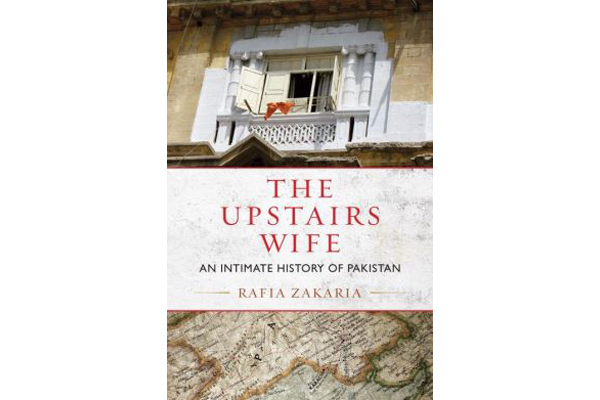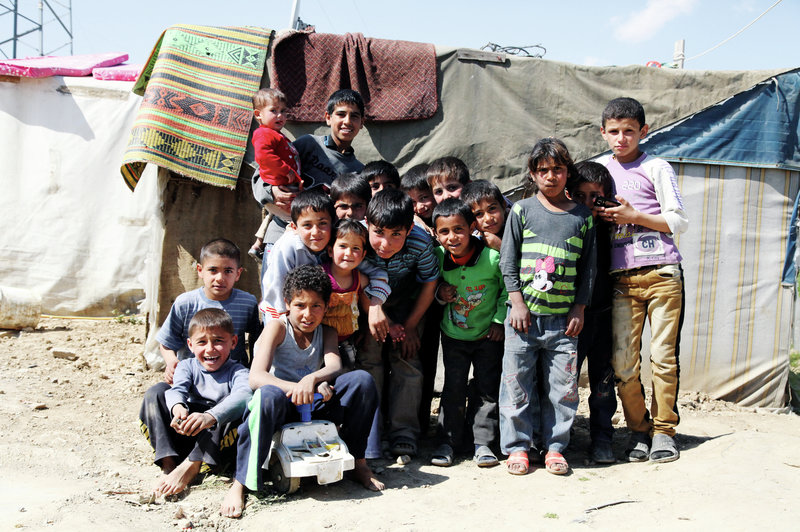“It was not enough to be born in Karachi to be from Karachi. It was not enough to live in Karachi to be from Karachi. It was also not enough to be born in Karachi and to live in Karachi to be from Karachi.” As Rafia Zakaria explains in “The Upstairs Wife: An Intimate History of Pakistan,” to truly be from Karachi you have to prove that your father, and preferably his father before him, had been born in Karachi. I read these words with both amusement and resignation, as someone born in Karachi whose family also migrated there from India in the 1950s. The question of who truly belongs to Karachi, and who is from Karachi, was an important question for my muhajir family and it is still central in the minds of Karachi’s increasingly diverse population.
In her debut novel, Zakaria describes her grandparents’ journey from India and the way they settled into a home in a “Housing Society” where they raised their children and eventually their grandchildren. Like Zakaria, I was born in the home of my grandfather, which happens to be in the same neighborhood as Zakaria’s. Unlike Zakaria, I moved away from Karachi at the age of one, but I nonetheless spent many summers of my childhood in my grandfather’s home, watching the drama of my family unfold around me.
Even at a tender age it was clear to me that my visits would be impacted by the political climate of the city at that particular time, and that things seemed to be getting steadily worse. The city I remembered from my childhood as a place of midnight jaunts to Clifton beach, shopping at all hours of the day and night, long visits with cousins who ran freely through their neighborhood playing gili-danda and cricket – that city transformed completely by the time I became an adult. The Karachi I found during my last visit in 2014 was a place circumscribed and unrecognizable as my childhood home. Lawlessness and violence, fear and death have seeped into the city and leached away so much of its spirit.
While this is the reality of life in Karachi, little is written about this or the impact of Karachi’s turmoil on the personal lives of the people who live there. It was therefore with great interest that I read Zakaria’s eloquent description of Karachi’s transformation from a brave young city to its current state of chaos. She tells the story of Karachi through the eyes of its women, with her aunt Amina and her paternal grandmother playing key roles. I saw clear reflections of my own dignified Daadi in Zakaria’s descriptions of her grandmother. Both migrated from India, settled into the same neighborhood, and saw their children go out into a world that was wholly unfamiliar to them. My own aunts were the first women in my family to go to college, much as Zakaria’s Aunt Amina. Yet unlike my own intrepid aunts, aunt Amina’s transition from a college girl to a wife stalled, because she was childless.
This childlessness was the apparent cause of the problem which forms the centerpiece of Zakaria’s novel: Aunt Amina’s husband Uncle Sohail decides to take a second wife, without her permission (which is required under Pakistani law at the time). Aunt Amina moves into the newly built second floor of her husband’s house, and there she watches with anguish as her life is divided in half. Attempting to follow the Quranic prescription for equal treatment of co-wives, Aunt Amina’s husband spends half his time with her and the rest with his new wife.
What follows for Aunt Amina is laid out across the backdrop of Karachi’s remarkable history of violence, unrest, and tragedy. Zakaria enumerates numerous episodes of attacks and assassinations, all the while providing readers with a basic understanding of the revolving cast of Pakistani politicians leading the country for the past half-century. Many scenes of Zakaria’s book lay bare the corruption of a dysfunctional government and the machinations of the Pakistani military as it wages desperate war against a rising tide of enemies from within and without.
Many events, from the formation of Pakistan through the efforts of Muhammad Ali Jinnah, to the rise and fall of the Bhutto family, is described by Zakaria in a detail which infuses these families and individuals with humanity. She highlights aspects of Jinnah’s personal life which have been long-forgotten, reminding her readers of the man behind the austere portraits which now grace every corner of Karachi. She traces the repeated exile and return of Benazir Bhutto from her own viewpoint as a young woman. In doing so she also showcases the aspects of Bhutto which have confounded most Pakistani women – her marriage to Zardari, her inability to make a meaningful difference for women, and the very fact of her rise and her fall.
The impact of these political shifts on the people of Karachi is described well. The growing Islamization of the country, the struggles between competing ethnic groups in Karachi, the rising dawn of the Taliban in Karachi – readers see the impact this has on the daily lives of Karachi-ites. Fear and frustration mar her own family’s life as they cope with each new calamity.
While Karachi builds and burns and reemerges from one tragedy to be engulfed in yet another, we see also the slow disintegration of Aunt Amina’s marriage and life. Her husband, while technically fulfilling his obligations towards her as his first wife, slowly makes it clear that he prefers his second wife. Aunt Amina’s silent suffering, and the way it is worsened by the tittering of her neighbors and friends, clearly impacts Zakaria as she grows older. Readers are left wondering about Zakaria’s own life and marriage, which she fleetingly refers to near the end, because it seems clear that she is strongly impacted by the events of Aunt Amina’s life.
Zakaria’s research and writing are stellar, and her ability to describe every detail of complicated and tragic events commendable. There are probably very few people who could have written a book such as this. Not only is Zakaria a daughter of Karachi, she is also a columnist for Dawn, Pakistan’s primary English language newspaper, as well as an American lawyer and a human rights activist who sits on the board of Amnesty International USA. Her ability to connect the dots between the personal story of Pakistani women and the public story of Pakistan clearly comes from her unique background.
Here, finally, is a book which highlights the impact of Pakistan’s political turmoil on its teeming middle class, and particularly the women of that class. I can only wish that the book was less grim. I finished it with a sigh and sat in silence for a while after putting it down.
It made me sad and frightened for my family in Pakistan, and for all the resilient people of Karachi who manage to carry on with their daily lives despite the chaos around them. Zakaria describes at the end how the city is now divided into zones, with many of them controlled by the Taliban. Zakaria writes: “When measured, the Taliban-occupied area measures 470 square miles, about one third of Karachi. This, in turn, translates to nearly 2.5 million people, mostly the poor and Pashtun, whose lives are now directly under the Taliban control.” Beautiful Karachi, once the City of Lights which drew so many migrants such as the Zakarias and my own family to its shores, now walks into a future with darkness all around. To understand how things turned out this way, I highly recommend Zakaria’s book.
[separator type=”thin”]
Mariam Ahmed is a Pakistani-American lawyer from Chicago, currently working as the Head of Compliance at a financial institution in Dubai. She was a regulatory lawyer at a large law firm in Chicago before moving to Dubai in 2012. She has two little boys with her husband, Haroon.





